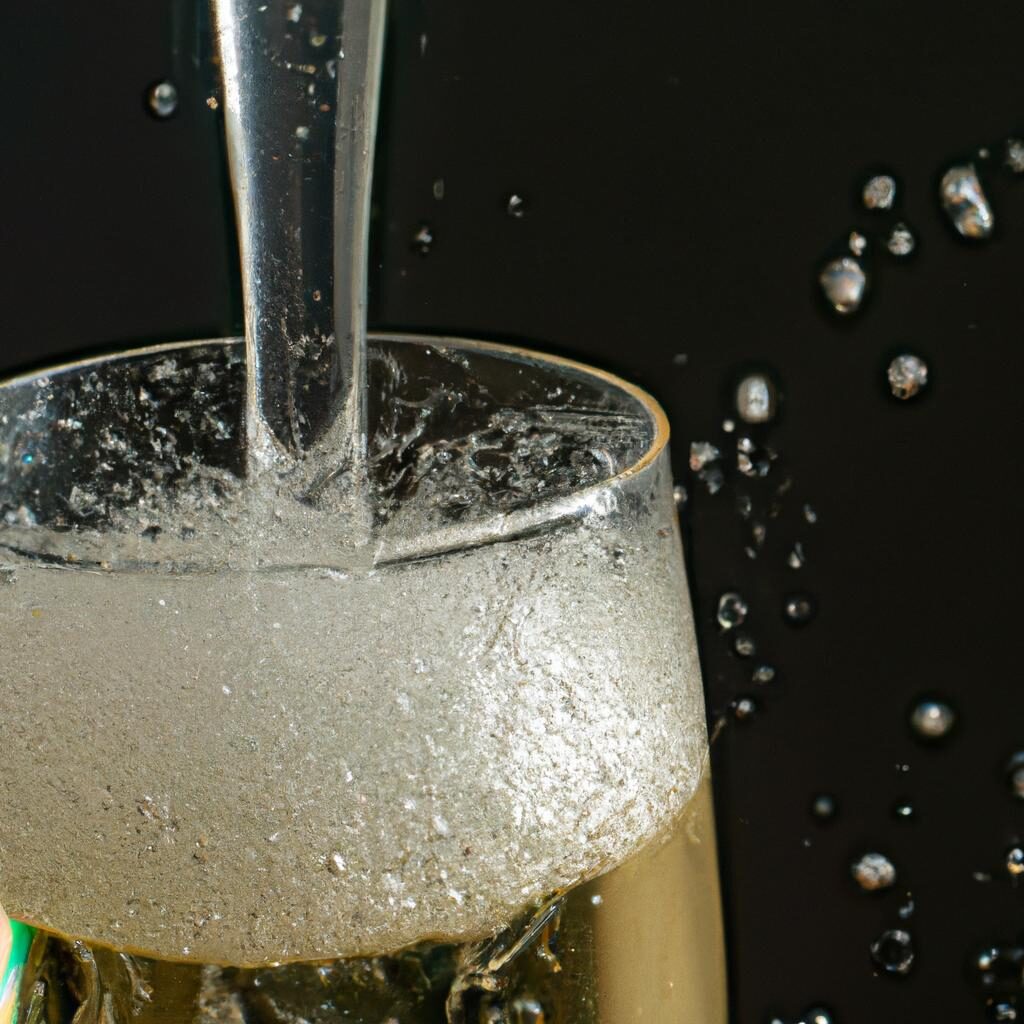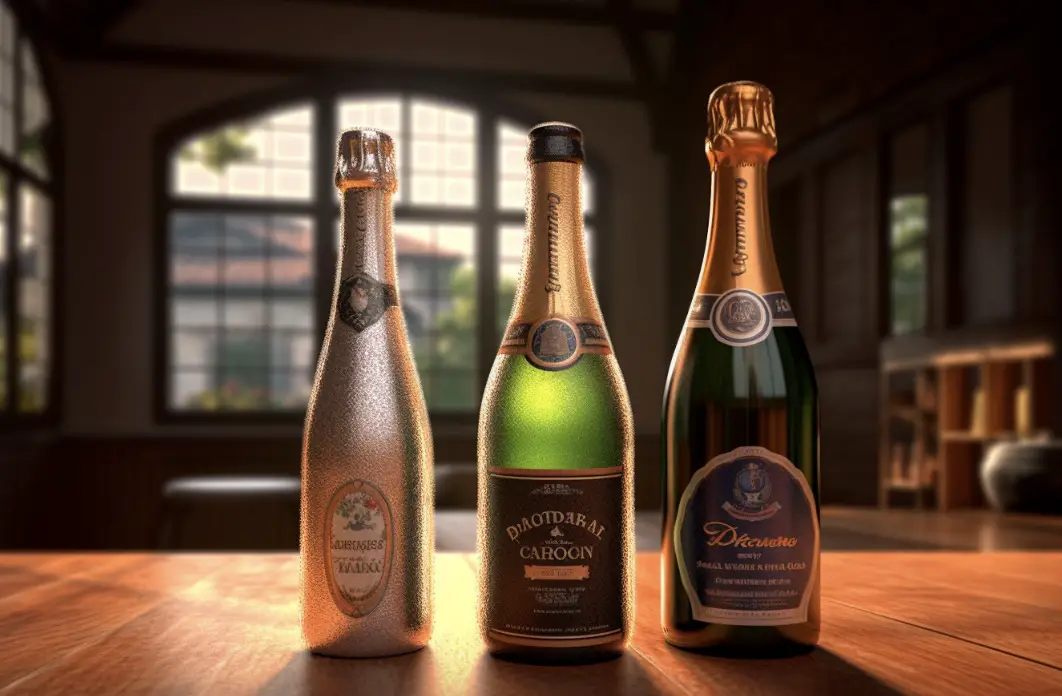As a brewer with experience in both the beer and wine industries, I often get asked an interesting question: How many beers is a bottle of champagne?
To answer this question, we need to consider various factors such as alcohol content, serving sizes, and the overall drinking experience.
In terms of alcohol content, a standard bottle of champagne is roughly equivalent to about five 12-ounce servings of beer.
However, as we will explore in this blog post, there are many nuances to this comparison that make it more complex than a simple one-to-one ratio.
Alcohol Content: Comparing Champagne and Beer
Champagne: Alcohol by Volume (ABV)
Champagne is a sparkling wine produced in the Champagne region of France. The alcohol content of champagne typically ranges between 11% and 13% ABV. This is a result of the winemaking process, which involves fermenting grapes with naturally occurring sugars. The addition of yeast consumes these sugars and produces alcohol as a byproduct.
Beer: Alcohol by Volume (ABV)
Beer, on the other hand, has a much wider range of alcohol content. The average ABV for beer is around 4.5%, but this can vary greatly depending on the style. Light beers can have an alcohol content as low as 2.5%, while stronger beers, such as imperial stouts or barleywines, can reach 12% ABV or higher.
Serving Sizes: Comparing Champagne and Beer
Champagne: Standard Bottle Size
A standard bottle of champagne contains 750 milliliters (ml) of liquid. This is the same volume as a typical bottle of wine. When serving champagne, it is usually poured into a flute, which holds about 125 ml. This means that a standard bottle of champagne contains approximately six servings.
Beer: Standard Serving Size
Beer is most commonly served in 12-ounce (355 ml) bottles or cans, or on draft in pint glasses, which hold 16 ounces (473 ml). A six-pack of beer contains a total of 72 ounces (2,130 ml) of liquid. In terms of volume, a six-pack of beer is roughly equivalent to three bottles of champagne.
Alcohol Equivalence: How Many Beers is a Bottle of Champagne?
To determine how many beers are equivalent to a bottle of champagne in terms of alcohol content, we need to compare their respective ABVs and serving sizes. Let’s assume we’re comparing a bottle of champagne with an ABV of 12% to a 12-ounce bottle of beer with an ABV of 5%.
- One 750 ml bottle of champagne contains 90 ml of pure alcohol (750 x 0.12).
- One 12-ounce bottle of beer contains 17.625 ml of pure alcohol (355 x 0.05).
To find the equivalent number of beers, divide the total alcohol content of the champagne by the alcohol content of one beer:
90 ml of alcohol (champagne) / 17.625 ml of alcohol (beer) = approximately 5 beers.
Drinking Experience: Comparing Champagne and Beer
While alcohol content and serving sizes are important factors when comparing champagne to beer, it’s also worth noting the differences in the overall drinking experience.
Champagne: A Celebration in a Glass
Champagne is often associated with celebrations and special occasions. The bubbles and effervescence of champagne create a unique sensory experience that is quite different from drinking beer.

Additionally, champagne is typically served at a colder temperature than beer, which can affect the perception of both flavor and alcohol content.
Beer: A World of Flavors
Beer offers a vast array of flavors and styles, from crisp and refreshing lagers to rich and complex stouts. The diversity in beer styles means that there is likely a beer for every palate and occasion. Furthermore, the carbonation level in beer is generally lower than that of champagne, which can make it easier to consume larger quantities without feeling as full.
Conclusion
In summary, while a standard bottle of champagne is roughly equivalent to about five 12-ounce servings of beer in terms of alcohol content, there are many factors that make this comparison more complex. The drinking experience, flavors, and serving sizes all play a role in how we perceive and enjoy these beverages.
To wrap up, here are 10 key facts about comparing champagne and beer:
1. Champagne typically has an alcohol content of 11-13% ABV.
2. The average ABV for beer is around 4.5%, but can vary greatly depending on the style.
3. A standard bottle of champagne contains 750 ml of liquid.
4. Champagne is usually served in flutes, which hold about 125 ml.
5. Beer is commonly served in 12-ounce bottles or cans, or 16-ounce pint glasses.
6. A six-pack of beer contains 72 ounces (2,130 ml) of liquid.
7. In terms of volume, a six-pack of beer is roughly equivalent to three bottles of champagne.
8. A bottle of champagne is equivalent to approximately five beers in terms of alcohol content.
9. Champagne and beer offer different sensory experiences due to factors such as carbonation and serving temperature.
10. The diversity in beer styles means that there is likely a beer for every palate and occasion.
FAQs
How many drinks is a bottle of champagne?
A standard bottle of champagne contains 750 milliliters (ml) of liquid. Assuming a standard serving size of 5 ounces (148 ml) per drink, a bottle of champagne would yield approximately 5 servings. However, it is important to note that serving sizes can vary, and some individuals may pour larger or smaller amounts per drink.
Does champagne give you a different drunk than beer?
Yes, champagne can give you a different drunk compared to other alcoholic beverages. This is primarily due to its unique composition and the way it is consumed.
Champagne is a sparkling wine that typically has a higher alcohol content than regular still wines, ranging from 11.5% to 12.5% on average. The carbonation in champagne can enhance the absorption of alcohol into the bloodstream, leading to a quicker onset of intoxication compared to non-sparkling wines.
Furthermore, the effervescence in champagne can create a more refreshing and invigorating drinking experience. The bubbles can cause the alcohol to be absorbed more rapidly, leading to a faster rise in blood alcohol concentration (BAC). This can result in a more pronounced initial “buzz” or feeling of intoxication.
However, it’s important to note that the effects of alcohol are highly subjective and can vary depending on various factors such as individual tolerance, body weight, metabolism, and overall alcohol consumption. Additionally, the rate of alcohol absorption can be influenced by factors like food consumption, hydration levels, and the pace at which champagne is consumed.
Ultimately, while champagne may provide a unique drinking experience due to its effervescence and potentially quicker absorption, the overall effects of alcohol on the body remain consistent regardless of the type of alcoholic beverage consumed. It is always important to consume alcohol responsibly and be aware of one’s limits to avoid any negative consequences.
Is champagne more alcoholic than beer?
No, champagne is not generally more alcoholic than beer. The alcohol content of a beverage is measured by its alcohol by volume (ABV) percentage. The average ABV of champagne is around 12%, whereas beer typically ranges from 4% to 8% ABV.
However, it is important to note that there are exceptions to these averages, as some champagnes can have higher ABV percentages due to variations in production methods and residual sugar levels.
Similarly, some craft beers can have higher ABV percentages, especially those classified as strong ales or specialty beers. Overall, when comparing standard champagne and beer, beer tends to have a lower alcohol content.
How many shots of vodka is equal to a bottle of champagne?
It is not possible to determine an exact equivalence between shots of vodka and a bottle of champagne as they are different in terms of alcohol content and volume. However, I can provide some general information to help you understand the comparison.
A standard bottle of champagne typically contains 750 milliliters (ml) of liquid, while a shot of vodka is typically around 44 ml in volume.
The alcohol content of champagne can vary, but it generally ranges from 11% to 13% alcohol by volume (ABV). On the other hand, vodka typically has an ABV of 40% or 80 proof.
To calculate the approximate number of shots in a bottle of champagne, we can consider the alcohol content. Assuming an average ABV of 12%, we can calculate the alcohol content in the bottle as follows:
Alcohol content in a bottle of champagne = 750 ml * 0.12 = 90 ml of alcohol
Now, if we divide the alcohol content of the champagne by the volume of a single shot of vodka, we can estimate the number of shots equivalent to a bottle of champagne:
Number of shots in a bottle of champagne = 90 ml / 44 ml ≈ 2.05 shots
Therefore, based on these approximations, a bottle of champagne would be roughly equivalent to around 2 shots of vodka. It’s important to note that individual tolerance to alcohol can vary, and this calculation is purely based on volume and alcohol content.




